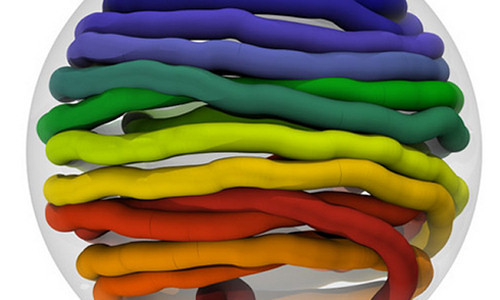Viruses are as simple as they are “smart”: too elementary to be able to reproduce by themselves, they exploit the reproductive “machinery” of cells, by inserting pieces of their own DNA so that it is transcribed by the host cell.
To do this, they first have to inject their own genetic material into the cells they infect. An international team of researchers, including Cristian Micheletti from SISSA (the International School for Advanced Studies in Trieste), has studied how this occurs and how long it takes for this process to be completed.
Micheletti and colleagues constructed a computer model of viral DNA and then simulated the release of genetic material from the viral capsid into the host cell nucleus. Far from being a fluid process, this ejection is subject to frictional forces that depend on the conformation of the DNA strand. “Fluidity of the process depends on how and how tightly the viral DNA is entangled”, explains Micheletti. “The more topologically ordered is the double strand of the genome, the faster it is ejected from the virus. The situation is somewhat similar to the behaviour of an anchor line that has been correctly coiled: when the anchor is thrown overboard, the line uncoils neatly without stops or jerks due to tangles.”
DNA has an intrinsic characteristic that makes its pattern of spontaneous arrangement very singular. Because it has two strands, DNA has a tendency to form highly ordered coils, just like anchor lines or thread spools. This isn’t the case with generic polymers, which form complex and chaotic tangles. The simulations by Micheletti and colleagues compared the behaviour of a model strand of DNA and a simple strand of generic polymer. “In 95% of cases the model DNA slid through the exit pore of the virus much faster than the simple polymer, as a result of the greater spontaneous order of its conformation”, comments Micheletti. “The simple strands may be even ten times slower than the DNA strands. Another interesting thing is that, although much more slowly, the simple strands in our observations always succeeded in leaving the virus completely. By contrast, in a small minority of cases, the DNA remained totally blocked, and this too is related to its tendency to form a spool that may sometimes present such complex torus knots – i.e., doughnut-like – to completely block ejection from the virus”.
The process timescales observed by Micheletti and colleagues are perfectly consistent with empirical observations, “including all cases of complete DNA stalling that have been reported, though not explained, in some experiments”, concludes Micheletti. “Our study, which estimated the time it takes viral DNA to leave the capsid in relation to its length and degree of packing could provide the starting point for designing artificial viral vectors”.
Story Source:
The above story is reprinted from materials provided by Scuola Internazionale Superiore di Studi Avanzati





